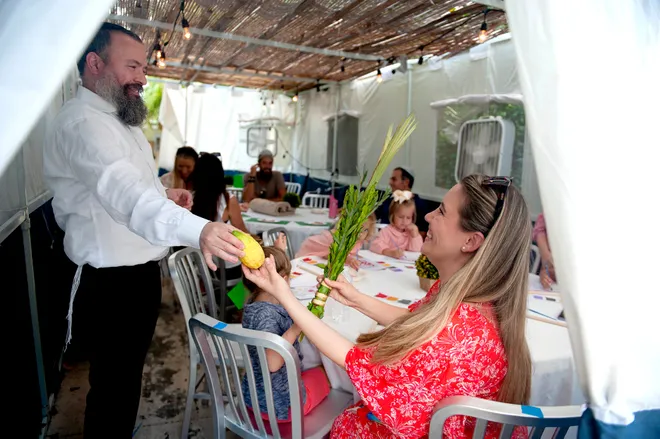What is Sukkot? And when is it? All your 'Jewish Thanksgiving' questions, answered
Sukkot, the week-long fall harvest festival for Jews, has been honored outside for thousands of years. The primary way to celebrate: to build and dwell in a man-made hut called a "sukkah."
The holiday has long been overshadowed by the Jewish high holidays Rosh Hashanah and Yom Kippur; it commemorates the Israelites' nomadic life in the desert after escaping slavery in Egypt.
"We were wandering for 40 years, we were in temporary shelters and we built temporary huts," says Becky Sobelman-Stern, the chief program officer at the Jewish Federation of Greater Los Angeles.
Here's what else you should know about Sukkot and what makes it special.

When is Sukkot?
It begins the night of Friday, Sept. 29, and runs through Friday, Oct. 6.
What is Sukkot all about?
In addition to the above, it is also an agricultural holiday connected to the fall harvest.
"This is really the Jewish Thanksgiving," adds Rabbi Andrea London of Beth Emet synagogue in Evanston, Illinois. She says it's a time to be thankful for our food and and pray for rain to bring a good harvest next year.
On Sukkot, you're supposed to eat in a sukkah (hut)
Observant Jews make sukkot (that's the plural of sukkah and also the holiday name) out of materials found in nature – Sobelman-Stern uses palms found in her yard – and sometimes with the help of sukkah kits that can have steel tubing and wooden panels. The sukkah is supposed to have three walls and a roof that provides shade but also allows guests to see through it to the stars.
The sukkah is meant to be a place for outdoor dining. It is also customary to sleep in the sukkah all week, though "not everyone does the sleeping part, especially here in Chicago," London says.
People who don’t have the space or ability to erect a temporary hut outside can use porticos and overhangs to get into the spirit of the holiday. The holiday "is outside. It’s about decorating. It’s about being creative," Sobelman-Stern says.
What does Sukkot mean?
The holiday serves as a reminder of what's important in life, London adds. "And how do we pursue those things? How do we be people who live with compassion and justice? How can our faith in God support us in times of trials and tribulations in crisis?"
Sukkot is meant to inspire thought and discussion around those questions, and also this one: "Who else, deceased or alive, would you like to have in the sukkah this year?"
Another holiday to know:What is Tu BiShvat? Everything to know about the Jewish holiday that celebrates nature
It's a Jewish holiday that requires joy
Sukkot is the only Jewish holiday in which there is a commanded emotion, explains Rabbi Sarah Krinsky of Adas Israel Congregation in Washington, D.C. "In this case, profound joy," she says.
Stepping outside, enjoying nature, decorating a sukkah and sharing food with friends is meant to "lead us to a deeper sense of presence, gratitude and even joy," Krinsky says.
And if the aforementioned activities don't put a smile on your face, one specific tradition should: the shaking of the lulav and etrog.
The lulav, which is meant to symbolize the body, is made from binding the frond of a palm tree to myrtle and willow branches. The etrog, which is meant to symbolize the heart, is a citron fruit that looks like a large lemon. Both are shaken in all directions as a way to recognize God’s presence. It's OK to treat the ritual as a dance.
And another:What is Shavuot? Everything to know about this lesser-known Jewish holiday
Disclaimer: The copyright of this article belongs to the original author. Reposting this article is solely for the purpose of information dissemination and does not constitute any investment advice. If there is any infringement, please contact us immediately. We will make corrections or deletions as necessary. Thank you.







